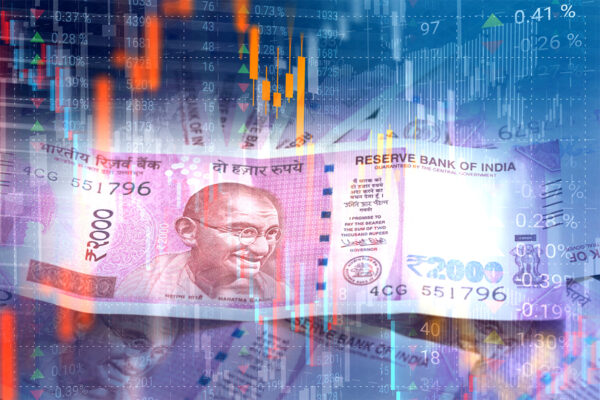Indian stocks may lose steam next year; here’s what to expect in 2023

Indian stocks may lose steam next year; here’s what to expect in 2023
Due to their very high prices, Indian stocks protected international investors from the failures they saw in 2022. In the coming years, they are likely to gain impetus again.
This is the general agreement among experts and strategists, who also anticipate that the rupee would perform worse than other emerging-market currencies in general and that the nation’s bonds will gain from its inclusion in important global indices.
Hiren Dasani, managing director at Goldman Sachs Asset Management, claims that “a few of those economies which have become overrated fare stronger than India for the reason that India has done exceedingly satisfactorily in every respect over the past 18 months, under the optimistic assumption that global GDP and morale will soon begin to rise again.” within the scenario of a revival in world GDP and morale. However, India will perform far better in the long run due to the prospect of compounding growth.
Take a look at what the Indian market has in store for 2023.

- Valuation Obstacle
India has been an exceptional market this year, with the NSE Nifty 50 Index up over 7% in contrast to an 18% decline in world stocks, but it continues to be the most expensive in Asia. This means that next year, India’s equities market performance would probably lag behind that of China and Korea, according to strategists at Goldman Sachs Group Inc.
By the end of 2023, Citigroup Inc. expects the Nifty to reach 17,700, or about 5% less than it did on Friday. The MSCI Asia Pacific Index trades on about 13 times forward earnings expectations, compared to the blue-chip benchmark’s slightly less than 20 times.
This month, analysts at Jefferies Financial Group Inc., including Akshat Agarwal, stated in a note, “We are wary of India due to high valuations.”
However, Citi noted that there has been little cyclicality and that Indian-listed companies are skilled at converting economic growth into earnings per share. Analysts recently reported that although India “is likely to follow any pro-cyclical rise elsewhere, we appreciate this constant supply.” For the same time period, Goldman Sachs has set a contrarian purpose of 20,500 for the Nifty, which is roughly 10% higher.
- Flow of Rupees

As investment flows return to emerging markets, the Reserve Bank of India is expected to take advantage of every prospect to build up its reserve stockpile. This decision could weaken the rupee.
As it sold dollars to strengthen the rupee and the value of its other foreign holdings decreased, India’s monetary authority saw its reserves fall by $83 billion this year. The currency‘s decline to approximately 10% against the dollar has been tempered by this, keeping losses relative to those of emerging Asian counterparts.
Goldman Sachs Group Inc. analysts, particularly Danny Suwanapruti, indicate in a report, “We think central banks that have the lowest threshold of capital stock and have had a clear unfavorable in their balances, especially India, Malaysia, and the Philippines, could avail the benefit of the ability to replenish balances, so depriving the possibilities for recovery.”
Goldman predicts the rupee will reach 82 by the end of the year, broadly in line with current levels, while ING Groep NV projects the currency to reach 83 by that time. On Friday, the rupee increased 0.3% to 82.2050 per dollar.
However, JPMorgan Chase & Co. analysts predict that India’s trading situation would put more pressure on the currency in 2023. A team led by Meera Chandan said in a report that “trade balances are anticipated to be double-squeezed next year between rising energy imports and weak exports.” This affects our choice to hold long on the dollar-rupee.
Index Hope
Bondholders are hoping that India would be included in international indexes after JPMorgan and FTSE Russell dropped to do so this year due to unresolved operational concerns. In October, global funds made their first sale of index-eligible Indian sovereign bonds in seven months after JPMorgan decided not to include the paper in its measure.
According to Goldman Sachs, inclusion into JPMorgan’s emerging-markets index is imminent and most probably to occur in 2023. Despite steadily rising federal government borrowing, foreigners still hold less than 2% of India’s sovereign debt.
But this rise in debt is also one of the explanations for DBS Bank’s underweight stance on Indian government assets for the coming year.
Due to 2024 being an election year, “fiscal consolidation could be somewhat deprived, and as a result, we estimate GSec supply is to stay relatively substantial in 2023,” stated analysts Eugene Leow and Duncan Tan on Tuesday. According to the author, “Market absorption of the massive supplies might be difficult,” especially regarding the impact that tightened liquidity will have on demands from financial institutions.
Recovery of Issuances

The selling of rupee-denominated bonds by Indian corporations is expected to pick up again the following year as issuers switch from bank loans to notes that deliver greater savings. According to statistics gathered by Bloomberg, companies have sold domestic bonds worth approximately 8 trillion rupees ($97.1 billion) so far this year, barely changing from the same time last year.
“Bonds would be a favored medium for borrowed funds following year since the return differential with banks’ loan rate is expanding,” says Ajay Manglunia, managing director and head of institutional fixed income at JM Financial Ltd.
He predicts that the selling of rupee securities would climb by something like more than 25% in 2023. Given that the majority of the central bank’s interest rate movements have been taken into account, businesses will start to favor bonds as borrowing costs normalize in the coming year.
In India’s renewable energy sector next year, corporate bonds are selected by T. Rowe Price and Nomura Holdings Inc. According to a recent paper, some factors contributing to the sector’s “promising investment prospects” include broadening yield spreads, ESG concerns, and supporting regulatory actions.




